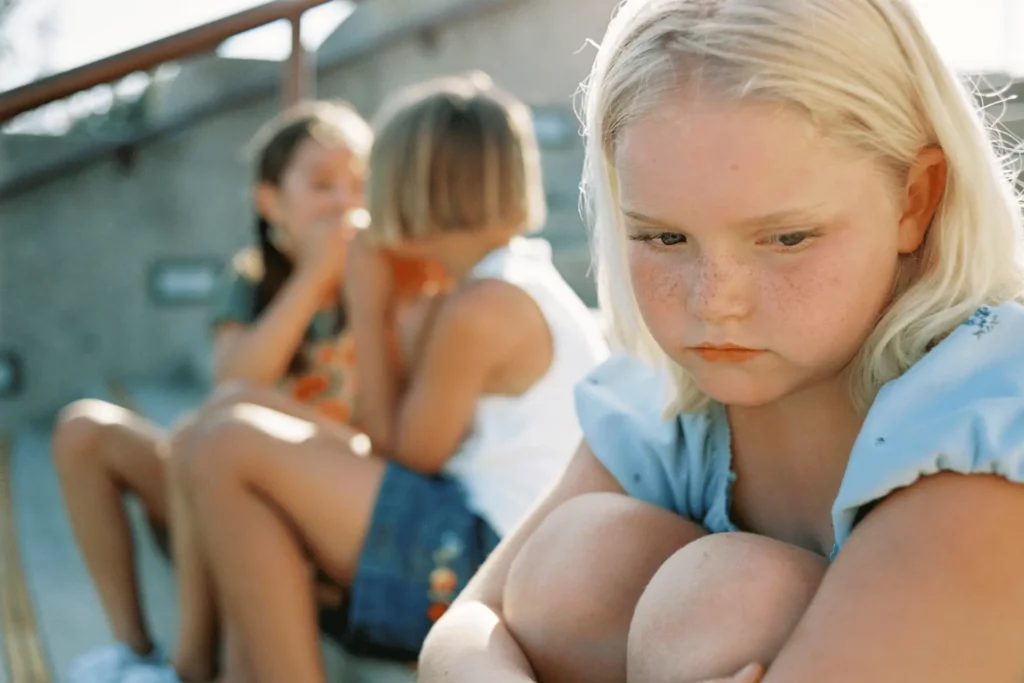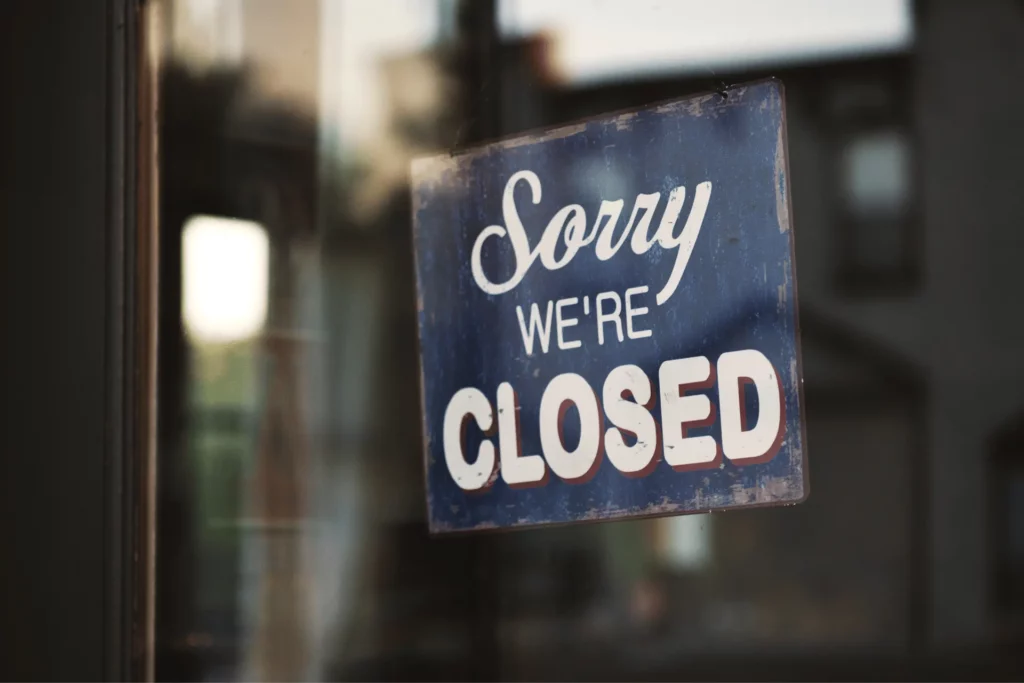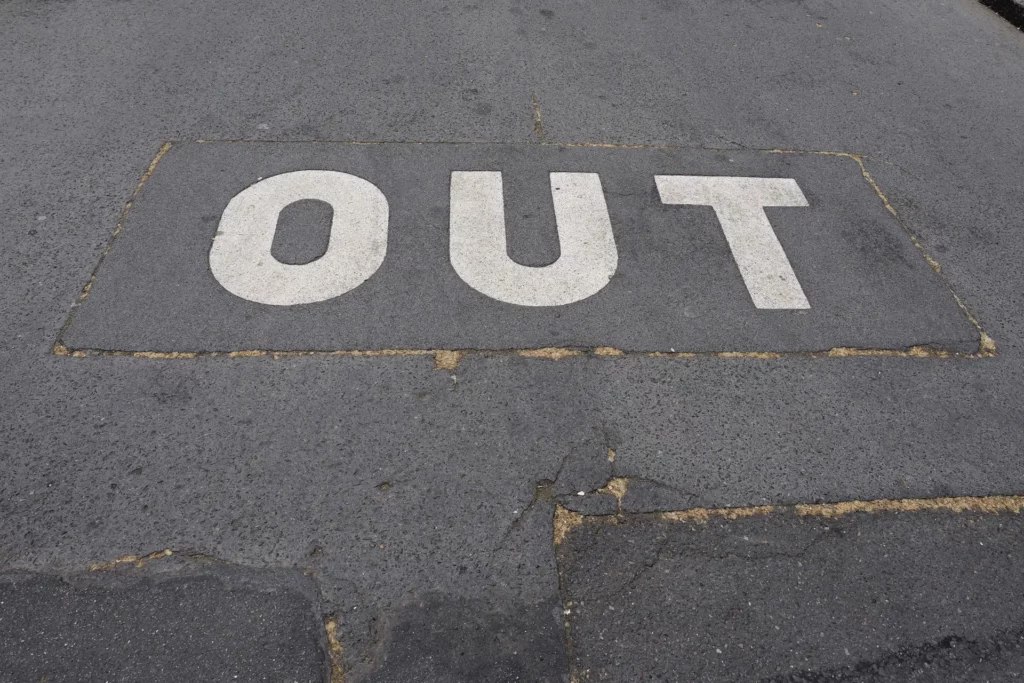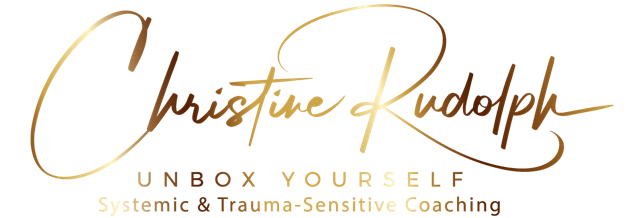Inhaltsverzeichnis
- Control is a means of feeling powerful – even if only in appearance
- Exclusion is a ‘tool’ of and for control
- Exclusion has many faces
- Hurt people: hurt people – beliefs, injuries and dysfunctional systems
- Sick and dysfunctional systems: secrets and nasty games
- The famous carpet or: Dinner for One, for everyone
- Intergenerational traumatisation
- Traumatised corporate systems are opaque, violent and rigid
- Healthy systems are transparent, value people and get the best out of them
Eeny meeny moo – and you’re out!
She’s eleven years old, the girl with the blonde pigtails. It’s sports class. She is wearing a new T-shirt that her uncle – as sports director in Koblenz – has brought her. She sits down on the gym floor with the other children. The teacher is just explaining the plan for the sports lesson when she stops.
Drilling eyes are directed at the girl, followed by an index finger: ‘THAT’S filth in my eyes! Get out of here!’ All eyes are on her. Her T-shirt is meant. It says something about VfB Stuttgart on it.
She has been expelled from the lesson. With a censure and a reprimand. The class teacher will later tell her that she has to be careful, otherwise she won’t be accepted into the extended secondary school – the school for the later A-levels.
1983, in East Berlin. In the GDR. The little girl – that was me.

Doing things differently to everyone else – was not approved of. Criticism was penalised. Being different was not an option. Back then, in the GDR. And even if this country consisted of control and conformity, in hindsight I see it as an expression of much deeper issues that need to be considered in a social context.
The GDR itself – or the ‘GDR system’ – was just a symptom of the following issues:
- Control as an expression of fear
- Manipulation, eavesdropping and exclusion as an expression of a dysfunctional system
- Sick systems as a result of traumatised people and intergenerational traumatisation
But how does this happen? Why do people want to control other people? What do they get out of it? And why doesn’t anyone intervene?
These are all questions I have been asking myself for a long time. This is probably also the reason why I have based my work on thinking in systems – from a bird’s eye view, so to speak.
What happened ‘back then in the East’ has nothing to do with ‘the East’ per se. It has to do with a deep-rooted psychological issue that usually manifests and expresses itself in broken (= dysfunctional) dynamics. ‘It’ also happens today. On a small scale (in families/friendships/with acquaintances/companies…) and on a large scale. The system is the same: control.
Control is a means of feeling powerful – even if only in appearance
Crime scene: Company
In fact, this is the place where power and control are very often exercised. Let’s take a manager. He was appointed to the position because he knows his line manager from previous times and the latter wants someone in the team who won’t cause trouble. Of course, this person will take the promotion in the company – at any cost: after all, it means more money, a company car and above all: status! He is (finally) WHO. (Apparently).
But this person actually feels insecure in his position. He has never led people before, the topic is new and he actually wants to be left alone. But now the pressure is coming from the higher management levels. And there are also employees who want something from him. Communication, strategy and support.
All too much. To compensate for his insecurity and create a feeling of power and control, he starts to micro-manage his employees, who are experts in their field with many years of experience. Micromanagement. He begins to control every aspect of their work, from the way they do their tasks to their break times. He wants to give constant feedback even when it’s not necessary, starts to interfere in issues even though he doesn’t know the context and starts to overstep his employees’ personal boundaries.
Those who also want status co-operate with him and are superficially ‘good weather’. The others avoid him. And are immediately penalised.
This gives him a feeling of control over his job and the team. It is an illusory power, because there is something bubbling underground. Morale in the team declines, work to rule and overtime for those who talk at him. The gap is widening. The door has been opened to bullying and bossing.
The ‘sign of power’ is actually a sign of deep insecurity and fear.
And this usually lies within the person themselves. They are often people who have often felt helpless and powerless in their own history as a child – and now want to ‘show everyone’ (‘power at last!’). Unfortunately, they are not aware of this mechanism, which is why they may be given leadership but have never developed it themselves.
In other words, they have never developed the ability to lead themselves – and are therefore unable to lead other people. As they somehow feel this inside but cannot grasp it, this triggers even more of their own deep insecurity, which they want to get a grip on with control and demonstrations of power.
What they have learnt to get what they want is manipulation.
And so begins – first an unhealthy and then a toxic cycle.
Exclusion is a ‘tool’ of and for control
It happens slowly and insidiously. It happens when a person doesn’t do, say or think like the majority of a group of people. Then he or she is ‘the other’ or ‘the aluminium hat wearer’, the ‘sleeping sheep’ etc.
What happens in the end?
It’s actually quite simple: the person who thinks ‘differently’ threatens the group. In the times of the mammoth, it was important to stick together. This need for security is still ‘in us’ – deeply ingrained in the oldest part of our brain. When danger ‘threatens’, this part of our brain kicks in.
It doesn’t matter whether there is ‘real’ danger – from the mammoth – or whether someone in the group has a different opinion.
It is good if you are able to reflect on this yourself. Because what happens otherwise is:
- Discrimination through prejudices and stereotypes: People tend to have prejudices and stereotypes towards other people or groups that they perceive as ‘different’. This leads to marginalisation.
- Fear of the unknown: People often feel threatened by what they do not know or understand. This can lead them to marginalise those who are different or think differently.
- Power and control: marginalisation is a means of regaining or retaining power and control that is perceived to be under threat. By marginalising certain groups (‘the unvaccinated’), others can strengthen their position.
- Social norms and values: In some communities, there are strong norms and values that do not accept ‘otherness’. This leads to those who do not conform to these norms being marginalised.
- Scarcity of resources: In situations where resources are scarce (e.g. water), marginalisation can serve as a means of securing access and advantage.
- History of conflict or trauma: In communities where there are individual and shared histories of conflict or trauma, exclusion serves as a self-protection mechanism for the group.
Exclusion has many faces
… and these are not only disturbing and make people ill, they are also illegal. And: what is most frightening is that those who marginalise others are usually supported by their group – and so the mood is deliberately created against ‘others’ – and the ‘attacker’ believes they are in the ‘right’.
A vicious circle that needs to be broken. But what exactly does it mean to be marginalised?
- Ignoring or excluding: People are not included in conversations, activities or decision-making processes.
- Interrupting or ignoring: A person’s opinions or contributions are constantly interrupted or ignored.
- Devaluation: A person’s abilities, contributions or characteristics are constantly belittled or devalued.
- Isolation and ghosting: A person is physically or socially isolated from the group
- Bullying or harassment: A person is regularly bullied, harassed or intimidated.
- Discrimination: A person is treated unfairly because of their race, gender, sexual orientation, religion, disability or other personal characteristics.
- Spreading rumours or misinformation: False information or rumours are spread about someone to damage their reputation.
- Deprivation of resources or opportunities: Intentionally depriving people of resources or opportunities that are important to their work, learning or well-being.
- Denial of support or help: Deliberately excluding someone from the support or help they need.
- Physical violence or threats: Someone is physically assaulted or threatened.
In most social media posts, I read something about ‘sticking together’ and ‘diversification’. However, very few people live what they say, usually unconsciously. For example, black-skinned people are included in their own concept of life, but people with a disability are unconsciously not (etc.).
But the fact is: every living being IS. Full stop. And every living being is different. And every living being has the right to live in a safe and respectful environment.
Hurt people: hurt people – beliefs, injuries and dysfunctional systems
But why our surroundings are often not safe – and very often not even respectful – is primarily due to our subconscious fear of ‘the stranger’. This is programmed into us: the homogeneous group against ‘the stranger’. This is what ensured our survival in the distant past. It is firmly burnt into our hard drive (brain stem = oldest part of our brain).
If we are not aware of this (spoiler: we usually aren’t!), then this part of our brain takes over on autopilot.
In addition, there are beliefs that we have inherited and perhaps also our own wounds and traumatisation that unconsciously control us.
Classic (and also very stereotyped) beliefs about different people are, for example:
- ‘Black people are dirty.’
- ‘White people are more intelligent than others.’
- ‘Women are more emotional than men.’
- ‘People who don’t believe in God have no morals.’
- ‘Homosexuality is unnatural.’
- ‘People with disabilities are less productive at work.’
- ‘Rich people are corrupt.’
If we are not aware of our own inner imprints and patterns – then they control us, our thoughts, our actions and our lives.
If we ourselves have had to make marginalising experiences in our (early) life that we have never reflected on and worked through, then we may still carry feelings of revenge and resentment (= wounds) around with us. And these in turn… often control us. The other person then has to pay for it.
It’s not for nothing that they say: Hurt people – hurt people. Hurt people – hurt people.
To break this cycle, I have to become aware (of myself – and others). Conscious in my actions. In my thinking. Reflect. Then I can stop the unhealthy cycle – and the passing on of these unhealthy ways of thinking and behaviour to my children and those around me.

Those who break the unhealthy cycle are usually ostracised – because they threaten the (unhealthy) system.
Christine Rudolph, EMDR therapist, systemic coach, trauma therapist, couples therapist and alternative practitioner for psychotherapy
When the bike stops, I can change something. Only then. Before that, it just keeps going. I see recognising and stopping unhealthy patterns as the main task in life for all of us. So that healing and peace can come.
Sick and dysfunctional systems: secrets and nasty games
What happens when ‘the wheel keeps turning…?’
The unhealthy dynamic becomes more and more entrenched. I always compare it to a tractor track that gets deeper and deeper when it rains. Even when dry, this is the favoured track (the favoured pattern) that we keep falling into. No one would think of taking a new fine track through the jungle when a wide and well trodden (easy!) track exists.
A system can be considered ‘sick’ or dysfunctional if it has a negative impact on the people in that system and that negative impact is not effectively addressed or remedied. Such as…
- Constant conflicts and tensions: When conflict and tension become the norm and are not (or cannot be) effectively resolved or it is not even wanted (usually unconsciously).
- No or poor communication: When a relationship or ‘system’ is healthy, there is open, honest and effective communication. However, if communication is suppressed, if misunderstandings and misinformation are the order of the day, then something is wrong.
- Injustice and inequality: When certain people are systematically disadvantaged or when there are significant inequalities in terms of power, resources or opportunities.
- Rigidity and inflexibility, no change desired: Healthy systems are able to adapt to change and learn and grow. If a system is rigid and inflexible and does not react to new challenges or information, then it has gone awry.
- Harmful norms and behaviours: When harmful or destructive behaviours and norms are accepted or encouraged.
- Lack of support and care: In healthy systems, people feel supported and cared for. Seen and encouraged in their very being. If this is lacking, this is one of the highest alarm levels.
In this context, ‘sick’ is a metaphor for dysfunctional, harmful behaviours that are considered ‘normal’ and are often even encouraged.
The famous carpet or: Dinner for One, for everyone
Dinner for One – for everyone. The only difference is that there is no tiger’s head to be tripped over, but a whole mountain of unaddressed issues.
Sweeping conflicts ‘under the carpet’ is a key characteristic of dysfunctional ‘sick’ systems. The carpet can be found in families, in couple relationships, in friendships, even in states and societies. Here are the related points:
- Dishonest communication: Issues and problems are not addressed openly and honestly. Effect: Misunderstandings, frustration and further conflicts.
- Conflict avoidance: Just don’t wake the tiger in the room… Conflicts are unavoidable in any co-operation and in any system. In a healthy system, it is an opportunity for growth through constructive dialogue. Avoiding conflict usually comes from learned behaviour and fear.
- The hot potato or: lack of responsibility: conflicts are ignored, swept under the carpet, the hot potato flies from one person to another. There is a lack of responsibility and constructive behaviour. Harmful behaviour is not addressed and the (initially internal) conflict grows bigger and bigger (until it becomes visible and tangible).
- Suppression of needs: Sweeping conflicts under the carpet can lead to needs and expressions of certain people being suppressed. For the sake of peace. Dissatisfaction, lack of motivation (what for?) and alienation from oneself are some of the consequences.
Intergenerational traumatisation
Dysfunctional systems very often arise as a result of traumatisation. This refers to conscious or unconscious injuries during development (developmental traumas) and/or traumas that have ‘happened’ as a result of environmental influences (such as war) (shock traumas).
Research has shown that trauma not only affects those who have experienced the shock and pain directly, but also those who have come after (transgenerational inherited trauma).
There is talk of four – and even up to seven – generations who still carry this trauma with them. Mostly, of course, completely unaware of it.
And this is where it gets dangerous: we unconsciously pass on old pain and dysfunctional behaviour… (the spinning wheel…). This is why it is so important to become self-aware and look at the issues, work on them and thus: stop the unhealthy wheel!
But who does that? Especially if he/she doesn’t even know about it?
And then, when coaching and therapy are ‘notorious’?
This is exactly where the key lies!!! Right here.
Because not only do we pass these things on to the next generations, but we also take these issues into companies, relationships, etc. – to the next level. So to the next level!
The next level up begins – from the unconscious issues – conflict. Escalation. War. The ‘old game’ of blame, marginalisation, abuse.
These are trauma consequences!!!
Unconscious drivers that control us. Unconscious patterns that sabotage relationships. Unconscious games that are experienced as powerful.
An example of a traumatised system could be a family in which abuse or neglect has taken place over generations – perhaps again due to war experiences in the previous generation and the high level of stress associated with this.
In such a system, people have developed behaviours and beliefs that are geared towards coping with trauma rather than healthy growth and development. This manifests itself in the form of dysfunctional relationships, lack of emotional intimacy, addictive behaviour, violence or other harmful behaviours.
The effects of this trauma can also be passed on to the next generation, even if the original traumatic events are not repeated. This often happens through patterns of behaviour and beliefs passed on from parents to children and can result in the trauma becoming ‘transgenerational’, i.e. it is passed on from generation to generation.
Traumatised systems, as described, are not limited to families. They are spun – like an invisible spider’s web – in and around organisations, companies and societies.

Traumatised corporate systems are opaque, violent and rigid
This is because they follow an invisible ‘concept’, based on the unresolved experiences of individual (mostly unconscious) people. For example, old power issues (from one’s own family) are brought to the table through rigid structures. People who have experienced power or powerlessness – and have never reflected on this – are automatically placed in their ‘old roles’. The (old) game begins. Again. All over again.
A concrete example is a medium-sized company run by a family over several generations. It specialises in the manufacture of special machines with a strong market position. However, the working atmosphere is extremely tense and the employees are often frustrated and demotivated, frequently ill or simply working a 9-5 job.
Company management is firmly in the hands of the founding family. There are clear hierarchies and little room for new ideas or change. Managers are often authoritarian in their behaviour and there is little opportunity for employees to give feedback or suggest changes.
Some employees have tried to initiate change in the past, but were either ignored or even penalised. As a result, many have stopped getting involved and feel powerless. Some have already resigned.
Old power structures from the founding family are being maintained in this company, leading to a rigid and violent corporate culture. Employees who have had similar experiences of power and powerlessness in their own families find themselves back in their old roles and the game starts all over again.
This situation can be described as a traumatised corporate system, as the unresolved experiences of the individual people are transferred to the entire system and lead to an opaque, violent and rigid corporate culture.
From my many years of experience, also with my clients, I can say that such constructs are no exception. On the contrary: I estimate that at least 80% of corporate landscapes are traumatic. Of course, the country context must also be taken into account: Which country has gone through which wars/experiences of violence/traumas etc.? Have these experiences ever been dealt with in a healthy way, both socially and individually?
And of course: the spider’s web weaves itself around traumatised individuals, relationships, families, companies and countries. It doesn’t stop on its own. And it doesn’t ‘go away’ when what has happened is swept under the carpet.
It’s always there.
Until someone puts a stop to it. Awareness. Also in the corporate and (intercultural) country context.
Healthy systems are transparent, value people and get the best out of them
Are systems ever ‘healthy’ if all people are – more or less – traumatised and carry old injuries with them?
The question is profound and raises important points. It is true that many people experience traumas and injuries in their lives. These experiences can affect our relationships, our behaviour and our creation and creation of things in different ways.
A ‘healthy’ system – be it a business, a family or a community – is not necessarily one in which no one is traumatised. Instead, it could be defined as a system where there are mechanisms in place to deal with trauma and hurt. This can be achieved through open communication, support and resources for healing, as well as structures that minimise power imbalances and promote respect and compassion.
It is also important to note that not all people who have experienced trauma carry it within them unresolved. Many people are actively working to heal and can use their experiences to promote empathy and understanding for others.
In a healthy system, people with traumatic experiences can play a role in helping to raise awareness of these issues and provide support for others. In this way, a healthy system can exist even when its members are traumatised. It is about how the system deals with these traumas and whether it provides space for healing, growth and change.
A system can be considered ‘healthy’ if:
- There is effective – simple, direct – communication that is open, honest and transparent.
- Conflicts are resolved constructively and in a timely manner.
- All people are treated fairly and have equal access to resources and opportunities.
- There is flexibility and adaptability in the face of change and new challenges.
- Positive behaviours are encouraged that support the well-being and development of members.
- There is a strong support and caring structure that recognises the needs of all individuals.
- There is a culture of respect, appreciation and recognition.
- People take ownership and actively resolve their issues.
- People feel heard, seen and valued.
- The system is able to learn, grow and develop.
I enjoy working with private individuals in a coaching and therapeutic context, mentoring people in leadership positions and advising companies on precisely such topics – and I look forward to supporting people and companies. A brief preliminary discussion – and we’ll see if it’s a good fit.
Sincerely, Christine


